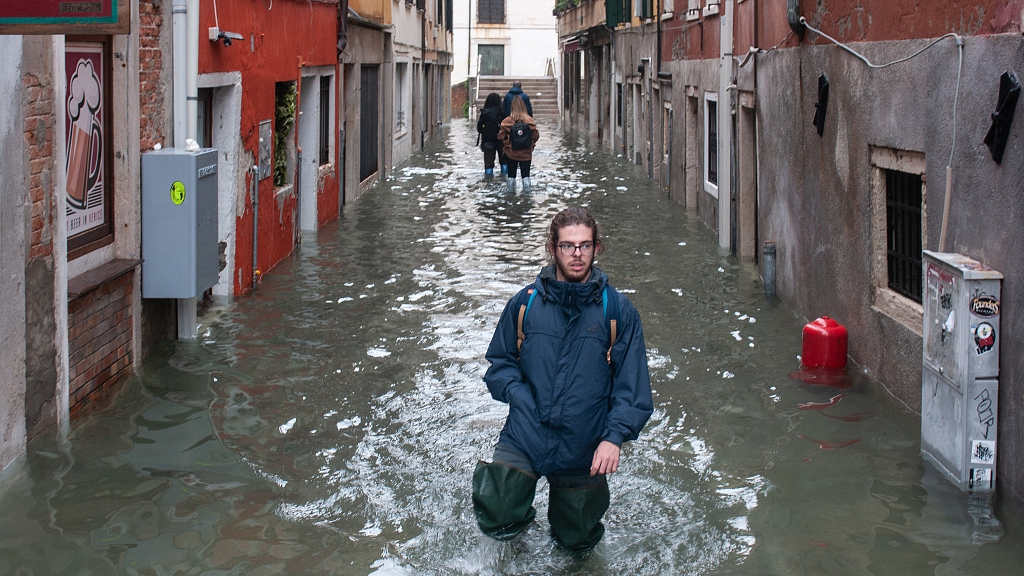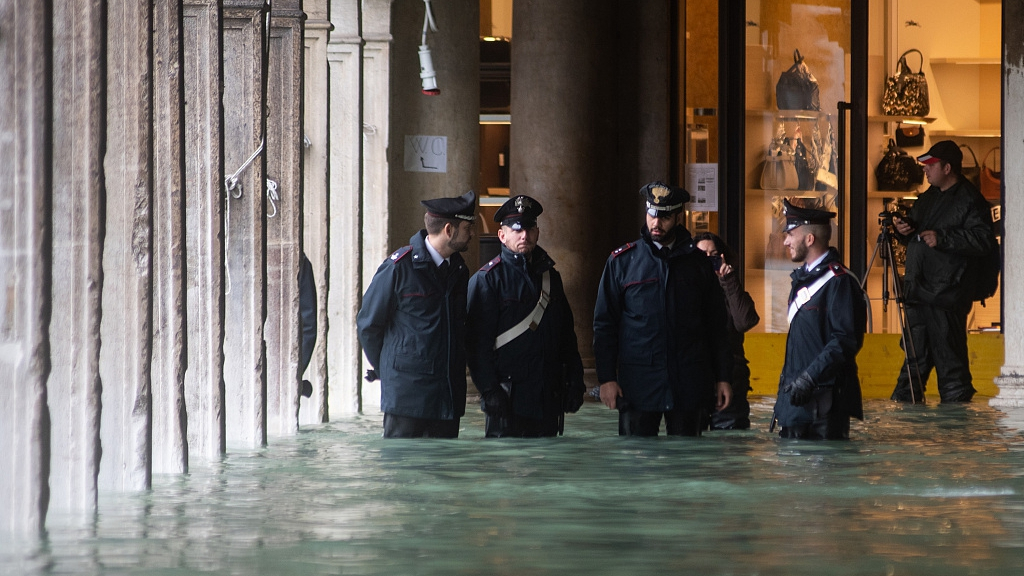The floods that have inundated much of the canal city of Venice, a very popular tourist destination, for the last 10 days are just the latest in a series of natural disasters in Italy that have taken a toll on the country's tourism sector.
Venice Mayor Luigi Brugnaro has voiced the hope for accelerated recovery efforts to minimize the impact on tourist arrivals, one of the city's main revenue streams.

A man wades through a flooded street during exceptionally high tide in Venice, Italy, November 17, 2019. /VCG Photo
A man wades through a flooded street during exceptionally high tide in Venice, Italy, November 17, 2019. /VCG Photo
There are similar stories in other parts of Italy.
The summer of 2019, for example, set record high temperatures across Italy, forcing dozens of cities to take steps to deal with the impact of hot weather, including handing out bottled water on the street and issuing warnings for tourists to stay inside, hydrate more, and avoid strenuous activities.
Last winter, unusually high temperatures affected ski slopes in the country's mountainous regions. In some areas, temperatures were even too high for resorts to use artificial snow machines to improve the situation.
Italy is also perennially at risk of earthquakes. According to data from the European Mediterranean Seismological Centre, Italy typically suffers from dozens of earthquakes every year. In the last decade, Italy has suffered at least 11 major earthquakes that resulted in nearly 700 deaths and caused billions in property damage.

Military personnel check St. Mark's Square during exceptionally high tide in Venice, Italy, November 17, 2019. /VCG Photo
Military personnel check St. Mark's Square during exceptionally high tide in Venice, Italy, November 17, 2019. /VCG Photo
These disasters have a double impact on tourism, according to Massimiliano Vavassori, head of the research and analysis department for the Touring Club Italiano.
"There is the actual damage to infrastructure and system breakdowns that cause problems. But there is also the question of the country's image as a tourist destination," Vavassori explained in a recent interview.
With more than 62 million arrivals last year, Italy is the world's fifth most popular destination, behind France, Spain, the United States and China, according to data from the World Tourism Organization.
But even a small reduction in the number of arrivals would be a blow to Italy's slow-growing economy. According to information from Italy's National Statistics Institute, the tourism sector has long been one of Italy's most reliable economic drivers.
According to Francesco Pastorelli from the International Commission for the Protection of the Alps, it is impossible to figure out the impact natural disasters have on tourism.
"I know that natural disasters can give a potential tourist a second thought," said Pastorelli.
"I would like to see tourists have a more flexible attitude when these things come up and to look into the actual impact on the destination, and perhaps make adjustments rather than change their plans altogether," Pastorelli added.
(Cover: Visitors in a flooded street in Venice at sunset, November 17, 2019. /VCG Photo)
Source(s): Xinhua News Agency